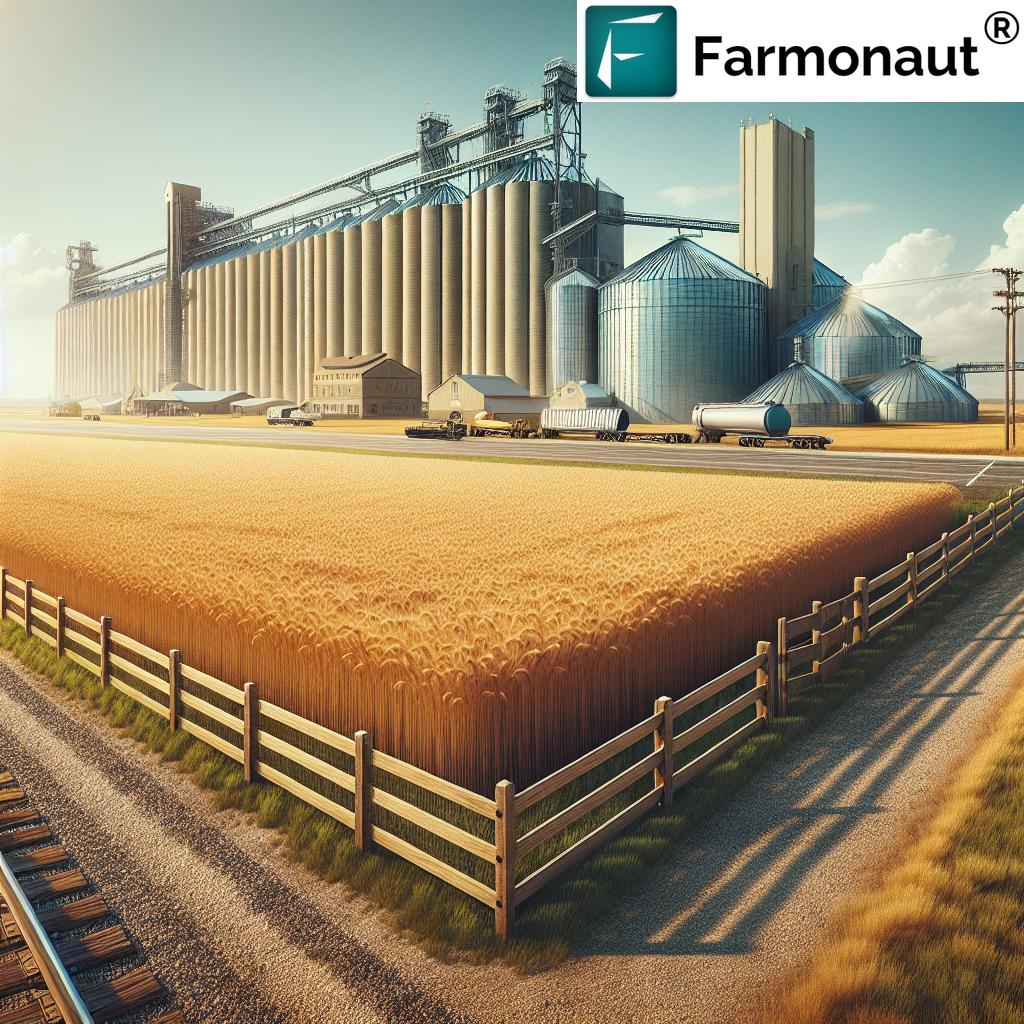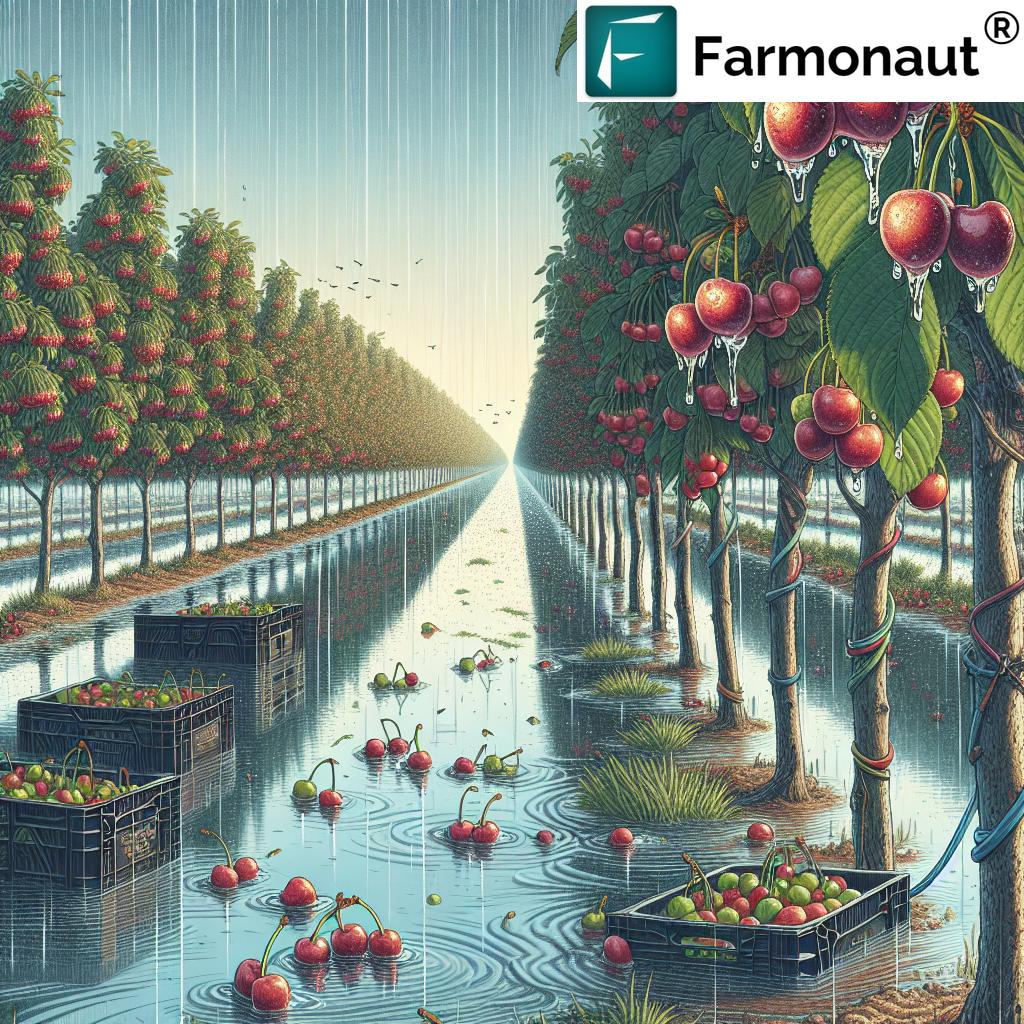Agriculture Loans Lexington & Midland | Dept Solutions – 2025 Comprehensive Guide
- Quick Facts
- Agriculture Loans in 2025: Empowering Farmers
- Understanding Agriculture Loans
- Key Players: Department & Regional Institutions
- Types of Agriculture Loans in 2025
- Comparative Overview: Lexington & Midland Agriculture Loan Programs
- Impact of Loans on Rural Economies
- Modern Technology in Loan Processes
- Farmonaut’s Role in Agriculture Loan Ecosystem
- Key Videos: Agriculture, Technology & Loan Solutions
- Future Trends: Agriculture Loans & Dept Solutions
- FAQ – Agriculture Loans Lexington & Midland
- Conclusion: Strengthening Rural Economies
“Over 70% of farmers in Lexington & Midland use department agriculture loans to expand their agribusiness in 2025.”
Agriculture Loans in 2025: Empowering Farmers and Strengthening Rural Economies
Agriculture remains the foundation of food security and economic stability worldwide. In 2025, regions like Lexington and Midland are at the forefront of rural innovation and productivity, thanks in large part to accessible agriculture loans lexington and agriculture loans midland. The critical role of dept of agriculture loans (DOA loans), along with regional lending programs, provides farmers, ranchers, and agribusinesses with the financial tools they need. With tailored credit solutions and a focus on sustainability, these loan products not only support day-to-day farming but also encourage climate resilience and technological advancement.
This comprehensive article explores the evolving landscape of agriculture loans lexington & midland, highlighting the importance of modern credit programs in empowering local communities and ensuring food security across rural America.
Understanding Agriculture Loans: Core Concepts for 2025
Agriculture loans are specialized credit solutions designed to meet the unique needs of farmers, ranchers, and agribusinesses. Whether in lexington or midland, these loans provide the much-needed financial capital for critical investments—such as purchasing land, livestock, seeds, fertilizers, machinery, and developing or upgrading infrastructure like irrigation or storage units.
Dept of agriculture loans (DOA loans) and regional banking products are usually crafted to offer competitive features compared to conventional bank credit:
- Lower interest rates: Supporting viability over the long term
- Flexible repayment periods: Adapting to agricultural cycles and farmer cash flows
- Moratoriums during planting or harvest seasons: Easing repayment burdens during critical work periods
- Credit for various needs: Investment in new equipment, input costs, expansion, or operational upgrades
Lexington’s agriculture loans lexington and Midland’s agriculture loans midland have adapted to cater to local specialties (corn, soybeans, cattle, orchards), offering products with terms aligned to local crop cycles and risks, enhancing the stability of community livelihoods.
Key Players: Dept of Agriculture, Rural Department, and Regional Lending Institutions
The Department of Agriculture (DOA) continues to be a pivotal player in facilitating access to agricultural credit across the United States, particularly in regions like Lexington & Midland. By 2025, the DOA has expanded its suite of loan programs and flexible schemes to encompass:
- Small and mid-sized farmers who are often underserved by traditional banks
- Special focus on sustainability, encouraging adoption of climate-resilient and eco-friendly technologies
- Tailored solutions for women farmers, youth, and marginalized groups to promote social equity
In addition to DOA, local financial institutions, cooperative credit societies, and regional banks in both lexington and midland collaborate closely to:
- Streamline approvals and ensure rapid disbursement of funds
- Customize products to reflect local conditions, crop types, and prevailing market risks
- Offer tech-enabled solutions for faster risk assessment and transparent loan allocation
Types of Agriculture Loans in 2025: Meeting Diverse Needs
The range of agriculture loans lexington and agriculture loans midland available in 2025 reflects the evolving diversity of farming practices, technologies, and business models.
-
Operating Loans
Short-term loans used to cover day-to-day expenses such as seeds, fertilizers, labor, fuel, and basic maintenance. Essential for managing seasonal cash flow fluctuations. -
Term Loans
Structured for medium-to-long-term capital investments like purchasing machinery (tractors, harvesters), constructing/expanding storage facilities, or acquiring land. Repayment schedules usually span several years. -
Livestock Loans
Specific programs aimed at purchasing livestock, herd expansion, and covering veterinary care or improvements to pastures and housing. -
Agri-Infrastructure Loans
Aimed at developing irrigation systems, cold storage units, renewable energy installations (solar-powered pumps, wind turbines), and even new greenhouses. -
Sustainability & Green Loans
Dedicated to adopting eco-friendly, climate-smart agricultural practices – such as organic conversion, carbon footprint reduction, precision technologies, and soil health projects.
Example: For corn and soybean producers in lexington, operating loans may emphasize fertilizer procurement and machinery upgrades, while in midland, cattle and fruit farmers often use term loans for pasture improvement or orchard expansion.
Comparative Overview of Agriculture Loan Programs in Lexington & Midland (2025)
| Program Name | Provider | Loan Amount Range (USD) | Interest Rates (%) | Eligibility Criteria | Application Process | Repayment Terms | Special Benefits |
|---|---|---|---|---|---|---|---|
| DOA Direct Farm Operating Loan | Dept of Agriculture | $5,000 – $400,000 | 3.0% – 4.25% | Small & mid-sized farms, proof of active operation | Simple, digital or physical | Up to 7 years; seasonal moratorium possible | Subsidized rates, climate resilience bonus |
| Regional Agri-Business Credit | Regional Banks, Cooperatives | $10,000 – $600,000 | 4.25% – 5.80% | All licensed producers in region, min. land requirement | Complex (financial docs, farm assessment) | 5–12 years, flexible for infrastructure investments | Rate discounts for high-yield or green tech |
| DOA Emergency Livestock Relief | Dept of Agriculture | $3,000 – $100,000 | 2.5% – 3.5% | Verified livestock impact (disease, climate event) | Digital, with quick vet approval | Up to 5 years; 1 year grace for eligible cases | Fast-track grants, vet subsidies |
| Midland Agri-Green Expansion Loan | Midland Rural Bank | $20,000 – $250,000 | 2.90% – 4.90% | Fruit/cattle farm owners, environmental compliance | Semi-simple, field visit required | Up to 8 years; eco-upgrade grace periods | Renewable energy rebate, mentorship |
“In 2025, credit solutions will fund $150 million in rural agriculture ventures across the Lexington & Midland regions.”
Impact of Agriculture Loans on Rural Economies
A well-designed and adequate supply of agricultural credit in lexington and midland is a powerful driver for community development, economic expansion, and strengthening food security. With access to flexible financing, farmers can:
- Invest confidently in modern technologies and crop diversification
- Weather the impacts of climate change and rising input costs
- Create local jobs, encourage agribusiness ventures, and improve productivity
- Start or expand family farms, supporting next-generation agriculturalists
- Build infrastructure for storage, processing, and distribution
The DOA’s focus on inclusivity and regional credit products has resulted in more equitable, robust, and climate-resilient rural economies through 2025 and beyond.
Did You Know? Credit solutions are increasingly assessed in part by their environmental and social impact, with bonuses or grace periods for those adopting sustainable techniques.
Modern Technology in the Agricultural Loan Process: 2025 Innovations
With evolving challenges, including climate risk, market volatility, and labor shortages, 2025 demands advanced solutions. Recent technological advancements deliver:
- AI-driven risk assessment: Enables lenders to more precisely evaluate creditworthiness, crop prospects, and potential for repayment.
- Satellite-based crop monitoring: Used for verifying loan applicants’ production claims, field sizes, and risk factors in regions like Lexington & Midland.
- Blockchain traceability: Increases transparency by verifying supply chain integrity, reducing fraud risks for financial products.
- Digital loan platforms: Empower both large and small-scale farmers with app-based applications, streamlined documentation, and quick feedback.
Farmonaut’s Role in the Agriculture Loan Ecosystem
As a technology leader, we at Farmonaut are committed to delivering advanced, satellite-based solutions that directly support the agriculture loan ecosystem in lexington, midland, and beyond.
- Satellite-Based Monitoring – Our real-time crop and land monitoring solutions help financial institutions verify applicant claims, streamline loan processing, and manage satellite-based crop loan & insurance portfolios more efficiently.
- AI Analysis – Our AI-powered systems, like the Jeevn AI Advisory, offer data-driven insights for better resource management—critical for both lenders and borrowers.
- Blockchain Traceability – We enable enhanced traceability for agricultural supply chains, delivering the data needed to prove loan-funded activities and ensure compliance with market standards.
- Environmental Impact Monitoring – Our carbon footprinting solution, integrated with satellite data, supports lenders in incentivizing and tracking climate-resilient farming practices among borrowers.
- Fleet & Resource Management – Our Fleet Management tools equip farms and agribusinesses to optimize loan-funded equipment and logistics, reducing operational wastes and expenses.
We also provide APIs and integration capabilities, enabling automated loan verification via satellite insights; see our API Developer Docs.
All our solutions can be managed via mobile (Android, iOS), web apps, and developer APIs—making technology accessible to lenders and producers at every level.
How does this benefit the agriculture loans lexington market?
It delivers verifiable, timely insights—reducing risk for lenders, promoting transparency and sustainability, and empowering farmers to access financing on fair, data-driven terms.
Our Large-Scale Farm Management platform supports agricultural enterprises overseeing multiple operations, making it easy to manage and optimize the full spectrum of loan-funded activities and assets.
Key Videos: Agriculture, Technology & Loan Solutions (2025)
- Earn $148K/Year Online in 2025 | Farmonaut Affiliate, Passive Income & Recurring Commission
- Farmonaut’s Remarkable Q3 2023 Milestones in Agricultural Sector
Future Trends in Agriculture Loans & Dept Solutions – 2025 and Beyond
As agriculture continues to adapt to a globalized food security challenge, 2025 marks a turning point:
- Climate-resilient finance: Loans increasingly come with incentives for adopting low-carbon, regenerative, and climate-smart practices.
- Digital loan platforms: Mobile- and web-based application processes are replacing paper-based legacy systems, inclusive even for new, small, and remote farmers.
- Integrated risk assessment: Use of AI and satellite data is now standard for lenders to minimize bad debts and ensure stability in rural lending.
- Expanded access: Department of Agriculture and regional banks increasingly focus on equity, serving women, young, and marginalized agriculturalists.
- Transparency and traceability: Blockchain will underpin most credit approval and verification in agriculture, supporting a fair, fraud-minimized ecosystem.
Continuous collaboration between public and private financial institutions will be essential for evolving these products and responding to emerging threats and opportunities within the agriculture sector.
For the business-minded farmer or agripreneur, understanding loan options, digital verification tools, and sustainable practices will be pivotal to success in a rapidly modernizing rural economy.
Farmonaut Subscription Plans
Explore subscription options to leverage advanced satellite, AI, and blockchain-driven solutions for agriculture monitoring, risk assessment, and loan verification in Lexington, Midland, and worldwide.
FAQ – Agriculture Loans Lexington & Midland
What are agriculture loans?
Agriculture loans are specialized financial products designed for the unique needs of farmers, ranchers, and agribusinesses, offering funds to purchase land, livestock, machinery, seeds, fertilizers, or to invest in infrastructure such as storage and irrigation systems.
Who provides agriculture loans in Lexington and Midland?
The main providers in 2025 are the Department of Agriculture (DOA), regional banks, rural credit societies, and cooperative institutions, offering a variety of programs tailored to local and crop-specific conditions.
What is unique about DOA loans?
DOA loans generally offer lower interest rates, longer repayment periods, favorable eligibility criteria, and incentive structures for sustainability, climate resilience, and social inclusion compared to traditional bank loans.
How can technology (like Farmonaut) help with loans?
Satellite, AI, and blockchain tools from firms like Farmonaut enable real-time field verification, precise risk assessment, accelerated credit approval, and transparent monitoring of crop, livestock, and land investments.
What are the repayment terms typical for agriculture loans in these regions?
Repayment terms vary by loan type and provider: typically 5–12 years, with options for grace or moratorium periods during planting or harvest seasons to reflect the agricultural cycle in both lexington and midland.
Are there green or sustainability-focused loans available?
Yes, a growing segment of loans specifically funds sustainable agriculture, carbon reduction, eco-friendly technology adoption, and regenerative practices. These come with added benefits like eco-upgrade rebates and longer grace periods.
How do I apply for a loan and what documents are usually required?
Start by visiting your local DOA office, regional bank, or cooperative credit society. Required documents typically include proof of land/farm ownership or lease, production/project plans, financial statements, and identification. Digital platforms (including mobile/web apps) are increasingly available for streamlined application in 2025.
Where can I find more resources to manage and monitor agriculture loans?
Explore tools like Farmonaut’s web/mobile app for satellite-powered monitoring and automated crop loan & insurance solutions to optimize productivity and loan outcomes.
Conclusion: Fostering Sustainable Agriculture & Rural Prosperity
Agriculture loans—from dept of agriculture loans to regional bank offerings—remain crucial to sustaining and advancing farmers and rural economies in Lexington, Midland, and across global agricultural communities. As 2025 unfolds, the trend is clear: financial solutions must be inclusive, sustainable, and tech-driven to meet the complex needs of modern agriculture.
Farmers and lenders alike are encouraged to explore specialized loan programs, invest in new sustainable practices, and integrate technology for maximum productivity and risk reduction. By leveraging data, innovation, and flexible credit, we together build a resilient foundation—ensuring food security, economic vitality, and environmental stewardship for generations to come.













